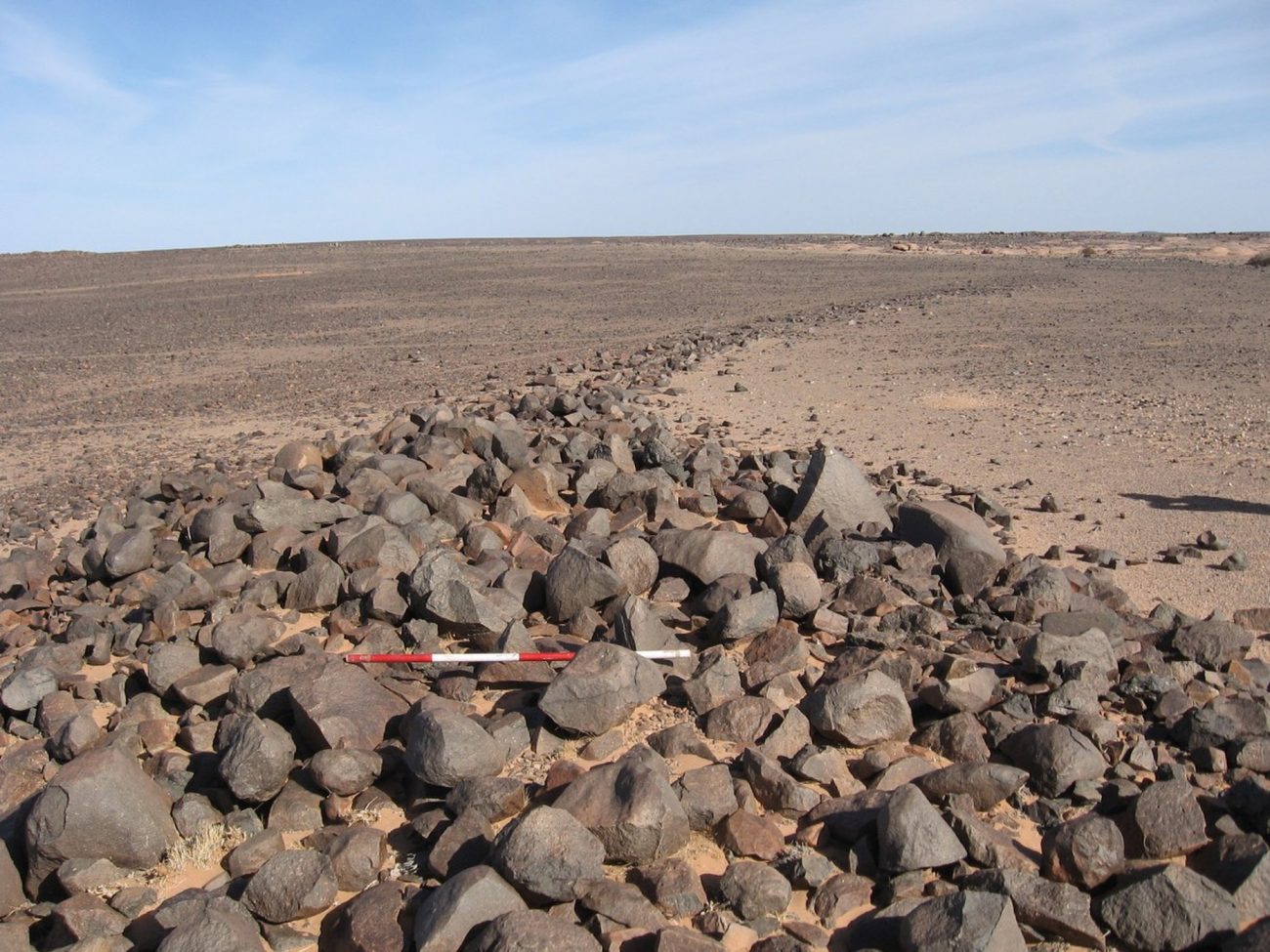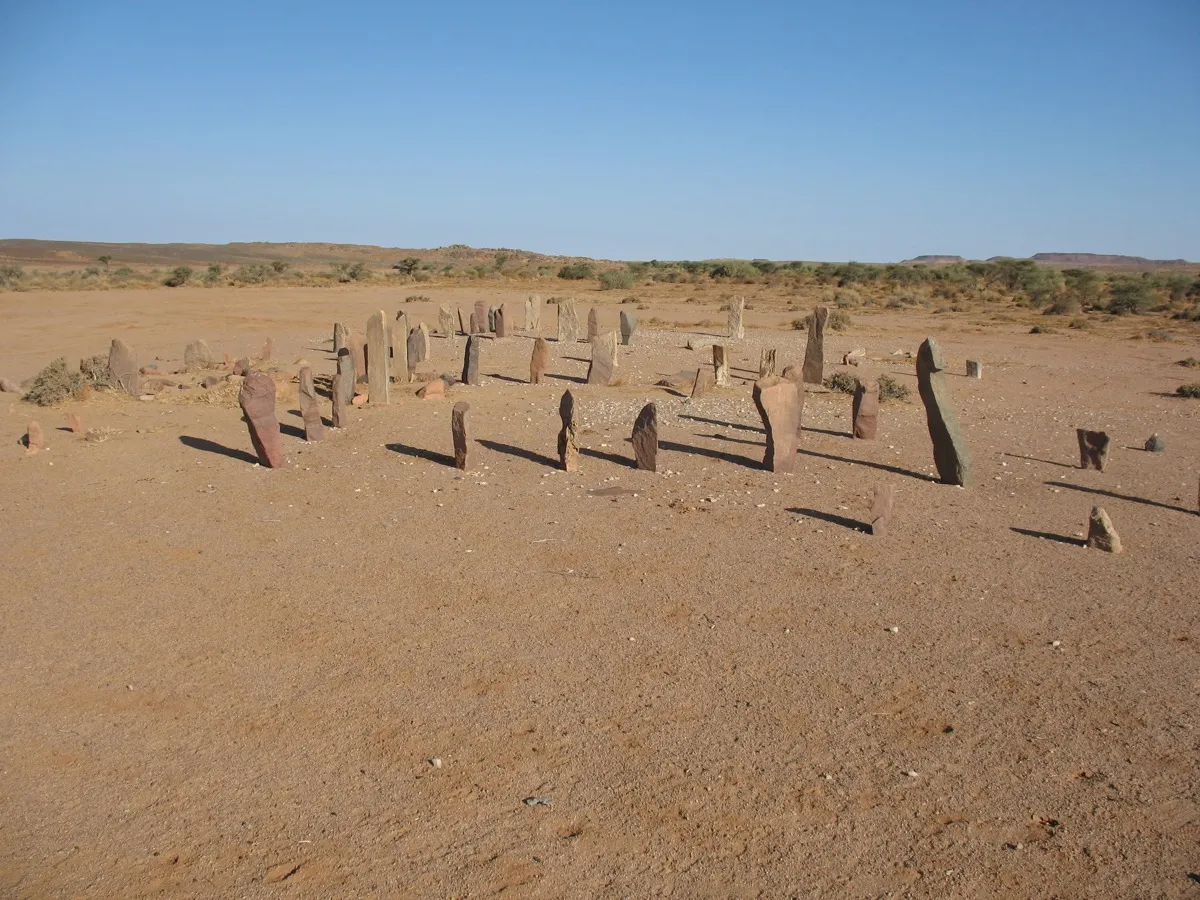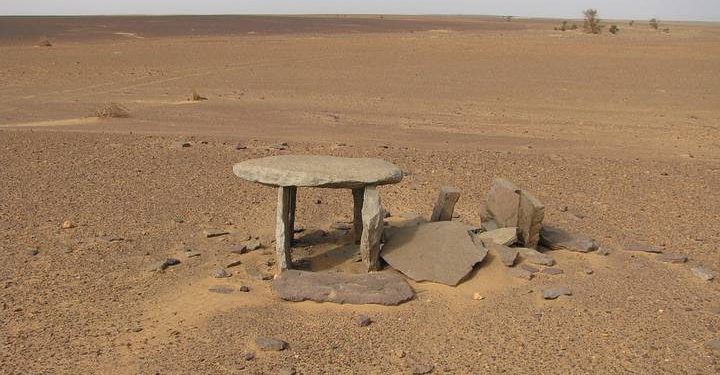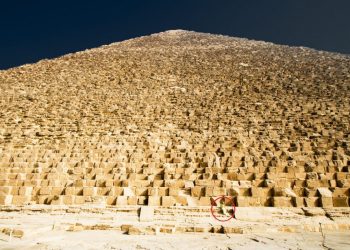Ancient stone structures in Western Sahara are revealing the outlines of a forgotten past. Scattered across remote stretches of desert, these enigmatic formations — some circular, others crescent-shaped or rectangular — are thought to be thousands of years old. Their purpose remains unclear, but their precision and scale suggest they were more than mere markers. Together, they point to a once-thriving culture buried in the sands of time.

Although these stone features have been known to locals for generations, they remained mostly invisible to the global scientific community. Political tensions and territorial disputes between Morocco and the Sahrawi Arab Democratic Republic made long-term research almost impossible for much of the 20th century.
But from 2002 to 2009, a group of researchers carried out limited fieldwork in Sahrawi-controlled regions. What they discovered was both surprising and humbling — an archaeological landscape almost entirely undocumented.
Their work was eventually compiled in a 2018 book titled The Archaeology of Western Sahara: A Synthesis of Fieldwork, 2002 to 2009.
Structures shaped with precision and purpose
The ancient stone structures in Western Sahara vary greatly in shape and size. Some are compact circles, others crescent-shaped or aligned in long, straight lines. One site spans over 2,000 feet (630 meters) — combining rock piles, platforms, and geometric outlines that appear to follow a precise and meaningful design.
Researchers believe many of these may be burial monuments or ceremonial sites, though only a few have been excavated. One such structure, a tumulus (stone burial mound), was found to contain 1,500-year-old human remains. It’s likely that many more tombs lie beneath the sand, still waiting to be uncovered.
But these weren’t just random piles of stones — they reflect planning, labor, and a cultural logic we’ve only begun to interpret.
Signs of a greener Sahara long ago
Today, Western Sahara is dry and desolate. But this was not always the case. Rock art found throughout the region depicts giraffes, cattle, sheep, and other fauna long gone from the area. Geological evidence shows that lakes and seasonal rivers once existed, supporting human life and movement.
The presence of the ancient stone structures in Western Sahara aligns with a time when the desert was far more hospitable — potentially supporting long-distance trade, spiritual practices, or even early forms of settlement. These structures may mark key locations in that now-lost landscape: sacred places, burial grounds, or boundary markers from a time when the Sahara was still alive.

A cultural legacy still buried in the sand
Despite the few studies done so far, experts believe the surface has barely been scratched. The remote location, combined with political sensitivity, has left vast portions of Western Sahara unexplored. Many sites are known only through satellite imagery and on-the-ground reports from locals.
Spanish researchers have documented some of the rock art, but much of the region remains archaeologically invisible to the broader scientific community. There’s a sense that an entire chapter of North African history lies waiting beneath the desert floor.
As Clarke and Brooks emphasized, “the wider international archaeological research community” has yet to fully engage with the region.
But with each new discovery, the picture sharpens — and what it suggests is powerful: this arid landscape may once have been the heart of a thriving, long-lost culture.











